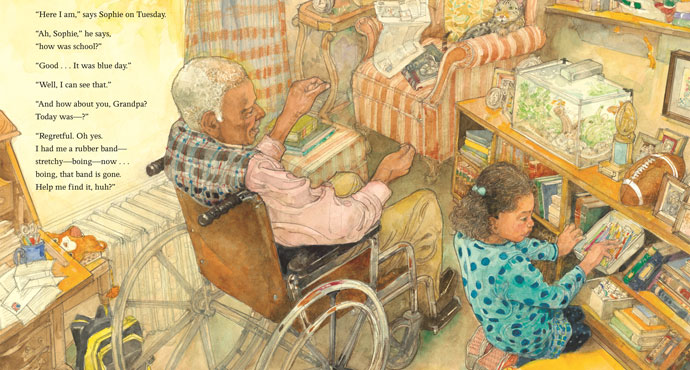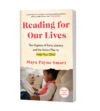I read picture books to my daughter for nearly five years before I gained a deep appreciation for the form. Sure, I read them daily and with enthusiasm (mostly). But I read them the same way I would read a chapter book or an illustrated dictionary. That is, I read them as if the pictures were servant to the text, secondary and utilitarian.
If I referenced a picture at all, it was to capture Zora’s attention with quick questions like: What color is her shirt? or How many ducks do you see?
Then I attended one of Carmen Oliver’s picture book seminars offered through The Writing Barn in Austin. Oliver, author of Bears Make the Best Reading Buddies, teaches the art of picture book writing, but her seminar was just as valuable as a picture book appreciation primer.
Oliver heightened my awareness of the ways great illustration can enlarge story. The realization dawned after class while I reread Richard Jackson and Jerry Pinkney’s picture book In Plain Sight. The story was literally expanded in this instance: the endpapers of In Plain Sight (the pages formerly known as filler that precede and follow the main text) are fully illustrated with scenes that enhanced my understanding of the characters and their circumstances.
In my haste to get to the text, I hadn’t even noticed the early images the first time I read the book. I skipped right to the start of the action–or so I thought. Missed the richly detailed rendering of the grandfather’s room (the story’s main setting), complete with piles of books, photographs and artifacts of a full life. Overlooked the title page’s double-spread illustration of him winking slyly, as granddaughter Sophie nestles against his wheelchair. Failed to see the dazzling image of buttons, marbles, keys, stamps and coins–contents of a junk drawer perhaps?–hidden beneath the dust jacket.
I noticed all of this the second time around because Oliver’s talk attuned me to such details. She taught us to take our time. To read slowly and with attention to the rhythm, pace, author intention, and illustrator vision that compel readers to turn the page.
She read to us–ten adults arrayed around conferences tables–like we were children. We sunk into the experience. She narrated One Big Pair of Underwear and we watched and listened as if we too were learning to count and eagerly anticipated the next number’s arrival. She read Boats for Papa and made a grown writer cry.
The fact that we were taking a picture-book class may mean the kid within us looms large. Still, by showing us what to look for, she deepened our grasp of the material in ways that allowed us to be moved. You can’t be affected by what you don’t notice. As a parent who’s read hundreds of children’s books, it was a much-needed refresher. A reminder to live the experience of each book, versus dutifully turning pages.
So I was ready when my daughter woke up the following morning. She snuggled into my lap on the couch before breakfast. I asked her what she saw on the In Plain Sight cover. We talked about the raised letters of the title, the gap in Sophie’s teeth and the pencil strokes beneath the watercolor. We slipped the dust jacket off, looked at all the marvels assembled there, and guessed at who owned them. We turned the page and wondered whose room was bursting with so much stuff, so many books and pets and memories. Is it an old room? Zora wanted to know. The doily on the armchair’s headrest gave it away.
We took in Sophie, Grandpa, a cat, a book and a babydoll on the title page spread and then, at last, the text. I read the 431-word account of the close-knit relationship between a young girl and her grandpa. I willed my voice to express the love and playfulness of their special game of hide and seek. The vigor of their interaction, despite the constraints of his room and wheelchair. The joy in the rhythm of their daily routine. We took in the closing endpaper and saw Grandpa (standing!) in the doorway, no wheelchair in sight, waving Sophie on her way. Then we talked about the story, grandparents and family life in a rich way, colored by the attention we’d paid to the art beyond the text.
If this post resonates with you, I bet you’ll enjoy my newsletter. I regularly send bookish news and notes out to more than 1,000 readers. Sign up here. This was originally published on Book Riot.



